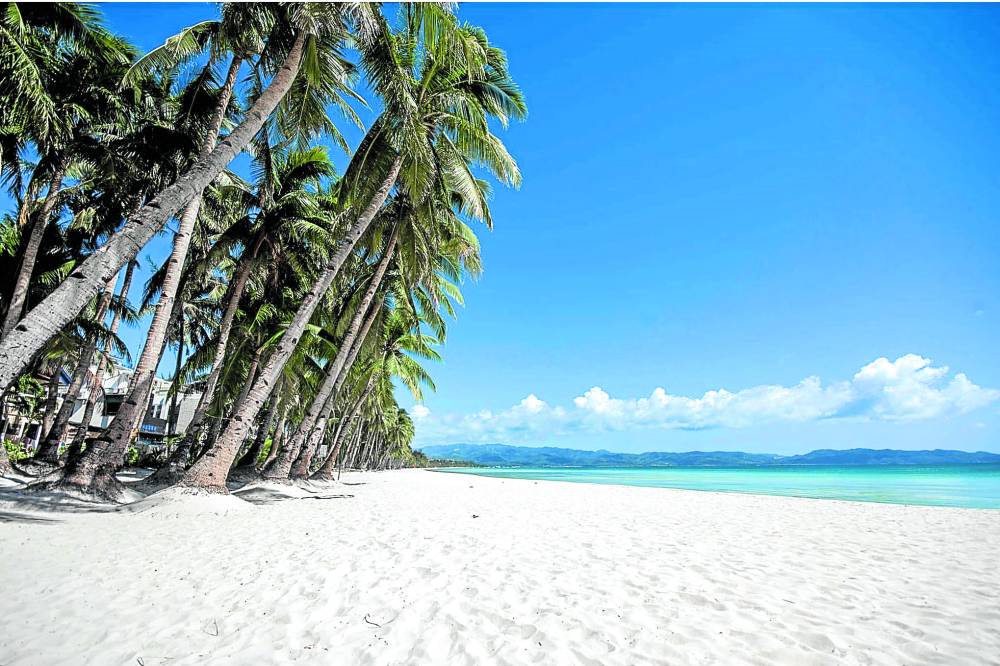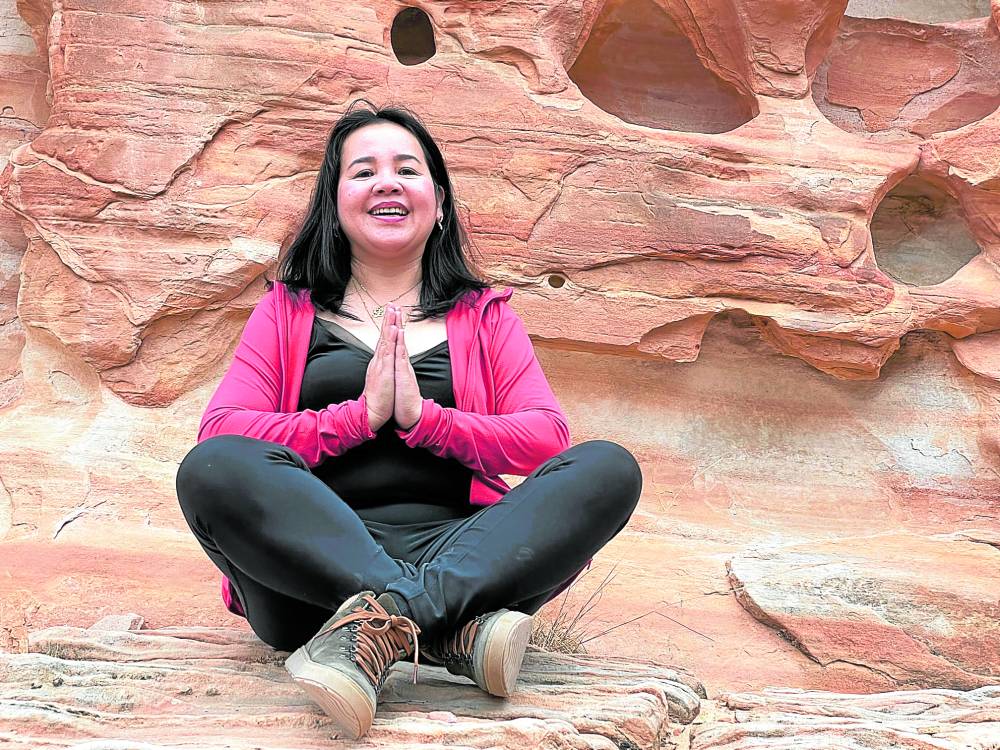
SAN FRANCISCO—Getting ready for her visit to her home island of Panay late this month, California-based Filipino-American Regina de Leon found herself juggling conflicting reports of quarantine protocols in the Philippines. And then the news reached her a few days ago: No more quarantine for fully vaccinated travelers from visa-free countries starting Feb. 10.
“Thank God I don’t have to endure staying in some random hotel for several days in Manila or Cebu, and paying for it, too. It’s a super birthday gift!” De Leon beamed, explaining that the trip is a birthday treat she’s giving herself after the suspense and horrors of the pandemic.
Already, Zeny Pallugna, senior tourism operations officer of the Philippine Department of Tourism in San Francisco, is besieged by phone calls from Fil-Ams all over the United States asking about this latest tourism policy announced recently by no less than Tourism Secretary Bernadette Romulo Puyat.
“This seems to be a much-needed reboot for the tourism industry,” Pallugna said.
Lockdowns and COVID-19 protocols knocked down Philippine tourism in the pandemic. The latest government data shows that tourist arrivals suffered a harrowing 82-percent drop—merely 1.4 million tourist arrivals in 2020 from 8.3 million in 2019.
Brighter side
Pallugna goes beyond such dire numbers, however, and strives to look at the brighter side. She pointed out some promising statistics.
She noted, for instance, that when the Philippines closed its borders in March 2020 at the onset of the pandemic, there was a caveat allowing Filipinos to come home to the Philippines. Despite the mind-boggling procedures and protocols they had to undergo, many overseas Filipinos returned to the home country to be with their loved ones during the pandemic.

Pallugna pulled out tourism data showing a 16.07-percent increase in overseas Filipino arrivals: 84,080 in 2020 from 72,436 in 2019. (In comparison, the increase from 2018 to 2019 in overseas Filipino arrivals was only 0.78 percent.)
When Fil-Ams discovered this caveat, they made use of it, too, resulting in 211,816 arrivals in the Philippines from the United States in 2020. While this is certainly a marked decline of 80.10 percent from prepandemic US arrivals (1.065 million in 2019), it must be underscored that this was a period when travel anywhere in the world, deemed a matter of life and death, was restricted, if not forbidden.
Such puny arrival numbers nonetheless pushed the United States as the second source market for Philippine tourism, dislodging China from its No. 2 spot in the past five years. (Korea remains the top source market for inbound Philippine tourism.)
A paper published a few days ago as part of the Southeast Asia Working Paper Series of Asian Development Bank (ADB) seems to confirm the inbound travel trend Pallugna observed, although in a different vein.
In “COVID-19 and Overseas Filipino Workers: Return Migration and Reintegration into the Home Country—the Philippine Case,” posted on the ADB website, Jong Woo Kong and Ma. Concepcion G. Latoja reported that, by the end of December 2020, the Philippine Department of Foreign Affairs had repatriated 327,511 overseas Filipino workers (OFWs), noting that the pandemic not only sickened OFWs but also scrapped jobs. (Almost 70 percent of OFW returnees came from the Middle East.)
Different reasons
Pallugna was emphatic: “People came home for different reasons. To be with loved ones, to bury loved ones. Some thought it was the end of the world. Many lost their jobs and had nowhere else to go. They traveled to the Philippines not for tourism purposes, but they traveled anyway, and—without disparaging their personal reasons—they helped shore up domestic tourism numbers.”
A career officer honed at the Philippine tourism department for 27 years, Pallugna was the tourism attaché-designate in New York before her current assignment in San Francisco. She previously handled the Singapore, Malaysia and Thailand markets. We worked together as colleagues when she started her role in the development of surfing tourism in Siargao Island and, eventually, throughout the Philippines. This led her to kick-start domestic and international initiatives on scuba diving, game fishing, other sports tourism programs, as well as cruise tourism. “The pandemic has shown us that the Fil-Am market can be a lifesaver for Philippine tourism.”
As it happens, Pallugna has just completed a study on the travel landscape of Fil-Ams. Her study showed that before the pandemic, Fil-Ams comprised 70 percent of US arrivals in the Philippines. But the market share of the Philippines from the international travel of Filipino Americans was only 21.9 percent.
“With over 3.5 million Filipino Americans, not including Filipino passport-holders in the US, there is a big opportunity to explore in this niche market,” Pallugna said.
She used online surveys, interviews and email marketing campaigns involving 420 Filipino American travelers, 16 interviewees (Fil-Am community leaders, travel professionals and Philippine government representatives in the United States) and 1,370 email marketing recipients, mainly from California, New York, Illinois and Texas, the home states of most Fil-Ams.
“The pandemic seemed like the end of the world, and Fil-Ams went home to be with their loved ones,” Pallugna said. “My study revealed that if COVID-19 restrictions would be lifted, many more Fil-Ams would fly to the Philippines. And now, such restrictions are gone.”
She submitted her study, “The Travel Landscape of Filipino-Americans: Destination Marketing Model for the Philippines,” as her dissertation for her Ph.D. in Hospitality Management at Philippine Women’s University in Manila late last year.
Her study found that Fil-Ams are generally willing to spend an average of $4,000 to $6,000 for at least 14 days in the Philippines, with 40 percent of Fil-Ams in her study traveling to the Philippines two to three times a year.
Preferred destinations

“Interestingly, some 59 percent of Fil-Ams involved in the study went home to the Philippines during the pandemic; only 39 percent visited before the pandemic,” Pallugna said.
Aside from their hometowns, the preferred destinations of Fil-Ams are Boracay, Bohol-Cebu, Manila, Davao and Palawan (in that order), favoring outdoor and natural attractions. They are keen on the quality of services and accessibility to destinations.
Pallugna also discovered that in making plans and decisions for travel, Fil-Ams rely on the “F” factors coined by American marketing guru Philip Kotler: friends, family, fans and followers.
Pallugna would like to add another “F”: Facebook.
“After all,” she pointed out, “Fil-Ams post their travels on Facebook and other social media. In this sense, they are not just destination brand consumers but they are also advocates—and can be the best brand ambassadors for the Philippines as a global destination.”
Unaware of Pallugna’s study, De Leon, from Milpitas in the San Francisco Bay Area, looks forward to her trip to the Philippines later this month.
Some of her close relatives had been afflicted by COVID-19, with a handful succumbing to it. “Going home was hardly an option because of the quarantine requirements that would mess up our finances and time and equanimity,” De Leon let on. “But now that such protocols are being waived for eligible travelers, Philippines, here I come.”
In fact, she plans to hop off to Boracay during her visit—not because it continues to be handpicked by international travel publications (such as Condé Nast Traveler and Travel + Leisure) as among the best beaches in the world, but because it’s, well, just across her hometown.
Which means, for De Leon, it’s really part of what she considers home in the Philippines. —CONTRIBUTED








































